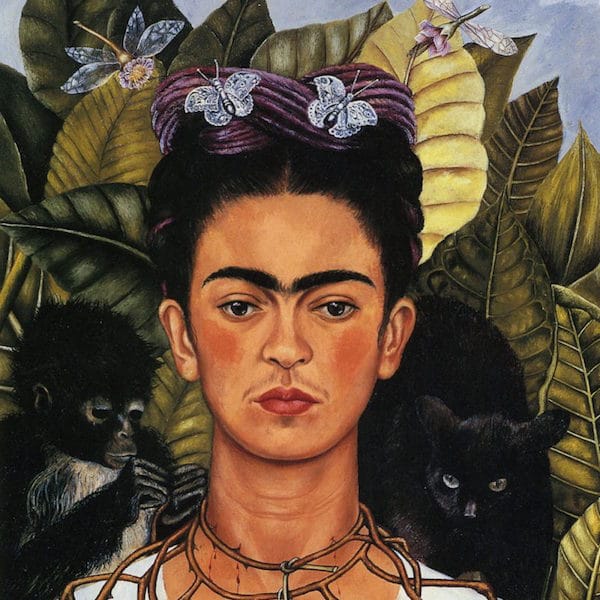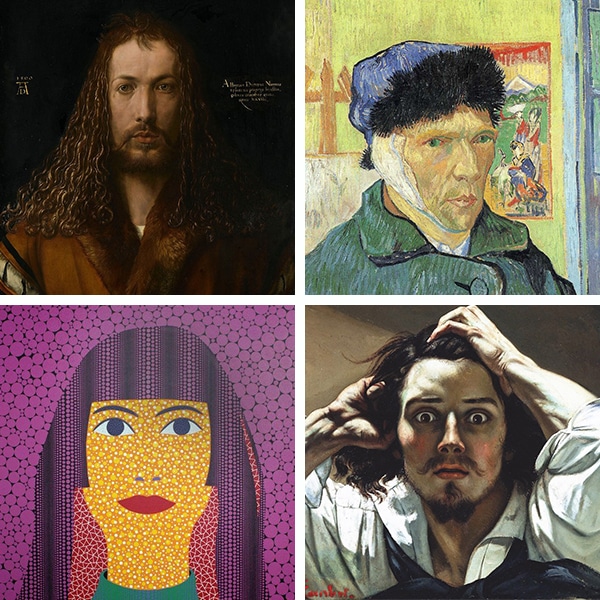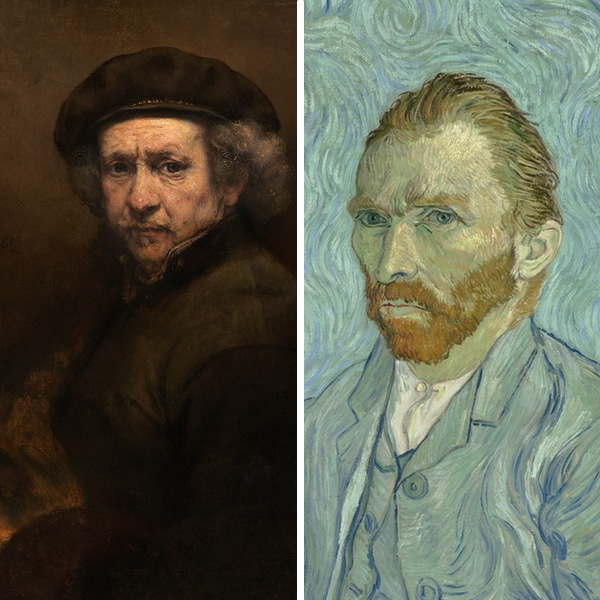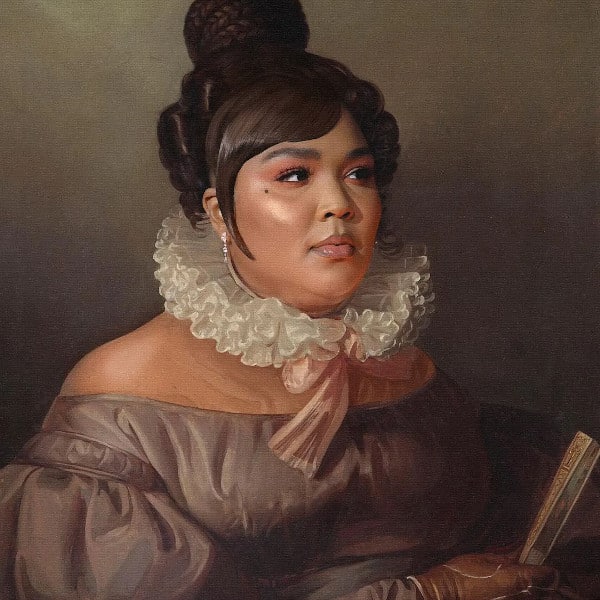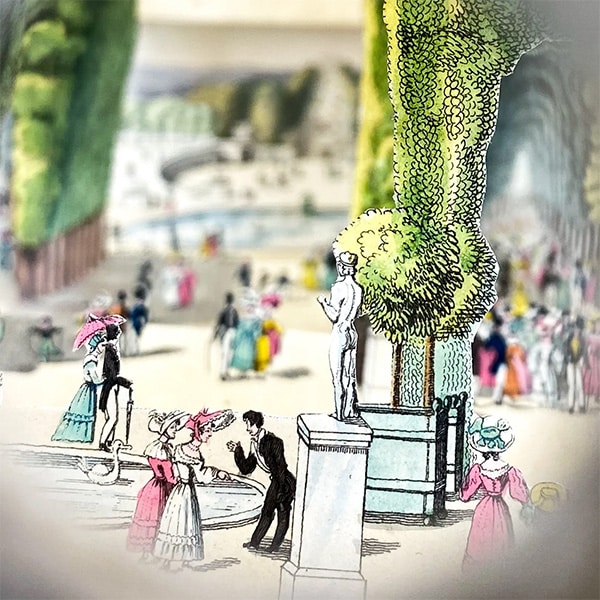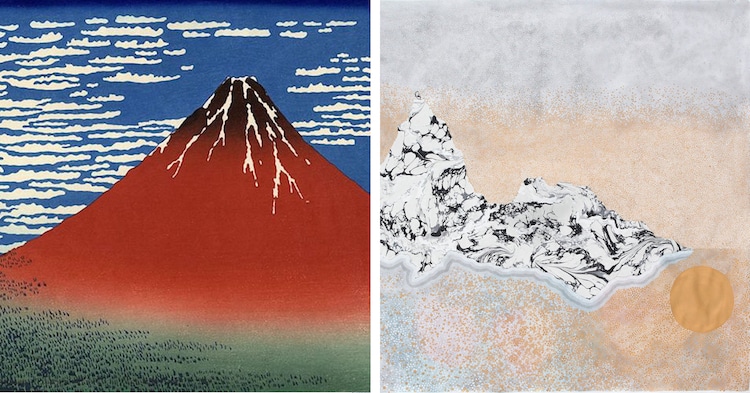
This post may contain affiliate links. If you make a purchase, My Modern Met may earn an affiliate commission. Please read our disclosure for more info.
In the contemporary realm of painting, artists often dabble in styles inspired by past artistic movements. One genre that has particularly strong roots in the past is landscape painting. Today, contemporary artists who work in this style visually demonstrate the ways in which their work has been inspired by the age-old genre, which is characterized by an interest in portraying nature. To see these influences and learn about landscape art, it is important to understand the ways in which artists—of the past and present—creatively approach it.
What is Landscape Painting?
Landscape painting (or landscape art) refers to an artistic genre defined by a focus on natural scenery as subject matter. Landscape paintings can depict a variety of settings, such as mountains, forests, rivers, and beaches. They often offer a wide view of the scene, and usually place some focus on the sky.
Artists choose landscapes as their subjects for a variety of reasons. In addition to wanting to represent or replicate their obvious beauty, some artists opt to create these depictions to study and explore various aesthetic elements, like light, color, and texture. Additionally, some artists also use scenes of nature as a way to tell a story, illustrate an idea, or conceptualize a metaphor.
Tracing the genre's evolution and looking at well-known landscape paintings throughout history enables one to visually recognize these differences and understand where contemporary landscape painters may find their inspiration.
Famous Landscape Paintings
Giorgione, The Tempest, c. 1505
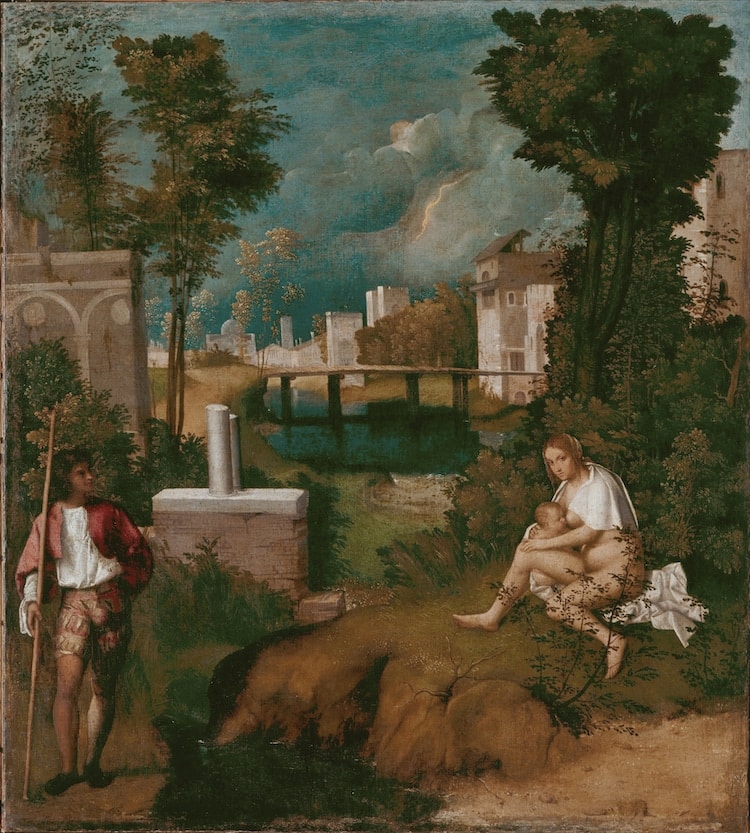
Giorgione, “The Tempest,” c. 1505 (Photo: Wikimedia Commons, Public domain)
In the Renaissance painting The Tempest, Giorgione places equal emphasis on the figures in the foreground and the stormy scene in which they are set. Even with such prominent characters, this piece is considered a prime example of early landscape painting.
Pieter Bruegel the Elder, Monthly Cycle, Scene: The Hunters in the Snow, 1565
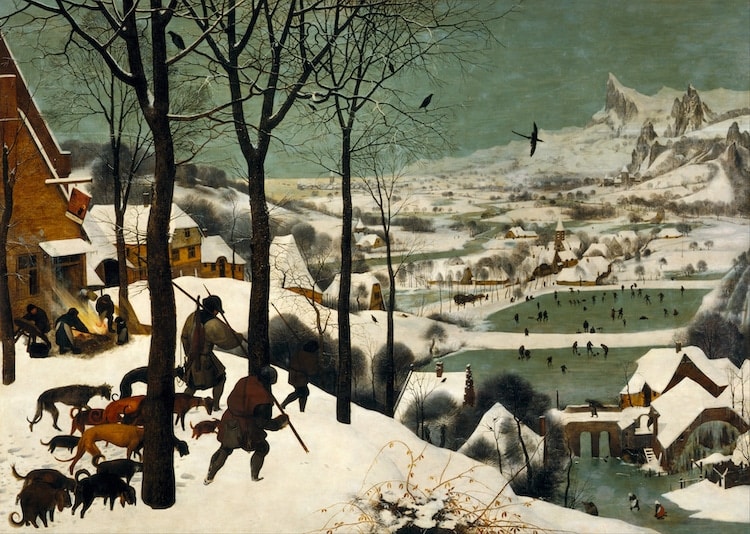
Pieter Bruegel the Elder, “The Hunters in the Snow,” 1565 (Photo: Kunsthistorisches Museum via Wikimedia Commons, Public domain)
The Monthly Cycle, Scene: The Hunters in the Snow is a Northern Renaissance painting from a series of works that conveys the different times of the year. It demonstrates both the artist's interest in capturing the changing seasons and his profound sense of perspective and depth.
El Greco, View of Toledo, c. 1596–1600
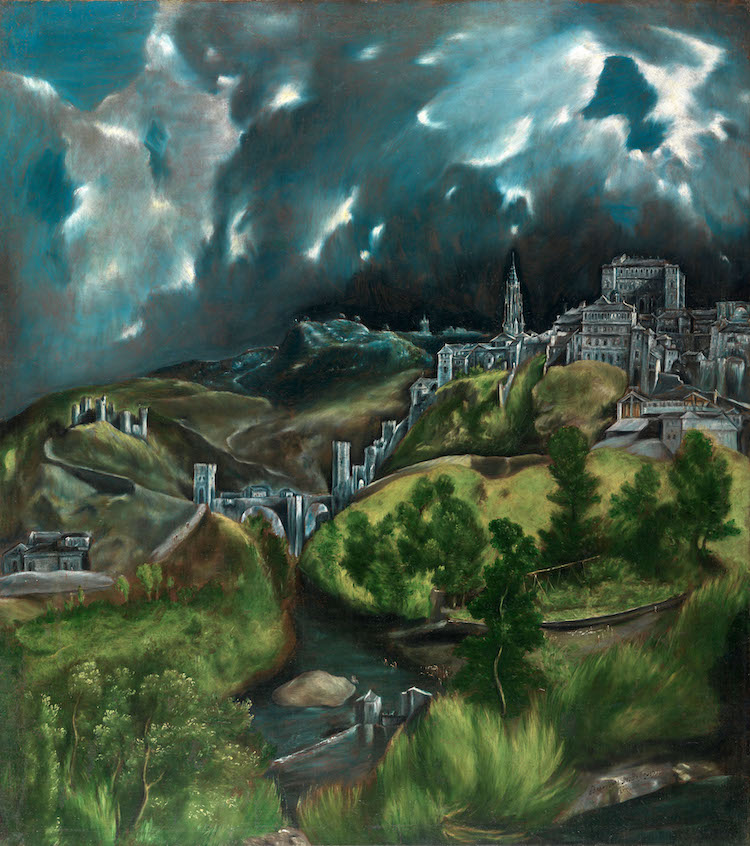
El Greco, “View of Toledo,” c. 1596–1600 (Photo: The Met via Wikimedia Commons, Public domain)
Like much of El Greco‘s work, View of Toledo offers an atmospheric study of the sky. Unlike his other pieces, however, this painting portrays a landscape—not a portrait—in the foreground.
Claude Lorrain, Pastoral Landscape, 1648
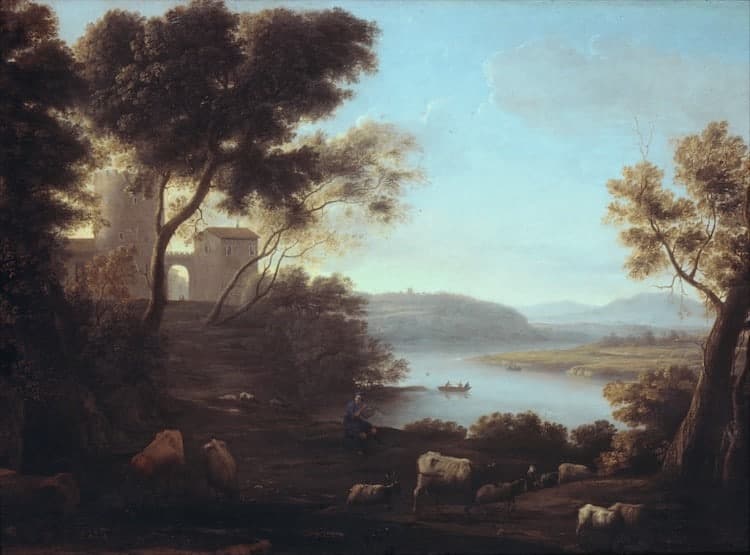
Claude Lorrain, “Pastoral Landscape: The Roman Campagna,” c. 1639 (Photo: The Met via Wikimedia Commons, Public domain)
Baroque painter Claude Lorrain is known for his idyllic portrayals of allegorical scenes rooted in either the bible or classical mythology. Pastoral Landscape is a work that aptly conveys this interest. Notice the Roman ruins on the horizon!
Thomas Gainsborough, Portrait of Mr and Mrs Andrews, 1748–1750
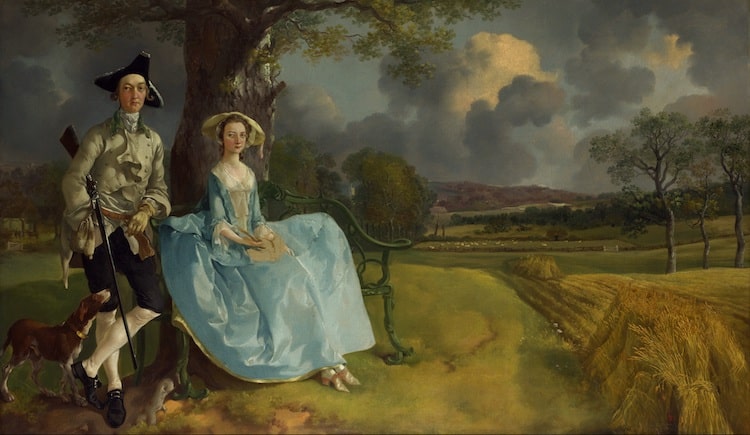
Thomas Gainsborough, “Portrait of Mr and Mrs Andrews,” 1748–1740 (Photo: Wikimedia Commons, Public domain)
Thomas Gainsborough's Portrait of Mr and Mrs Andrews presents the estate of a recently married couple. While the figures play a primary role in the piece, the landscape is also in focus. According to the National Gallery, “the emphasis on the landscape here allows Gainsborough to display his skills as a painter of convincingly changing weather and naturalistic scenery, still a novelty at this time.”
Caspar David Friedrich, The Wanderer Above the Sea of Fog, 1818
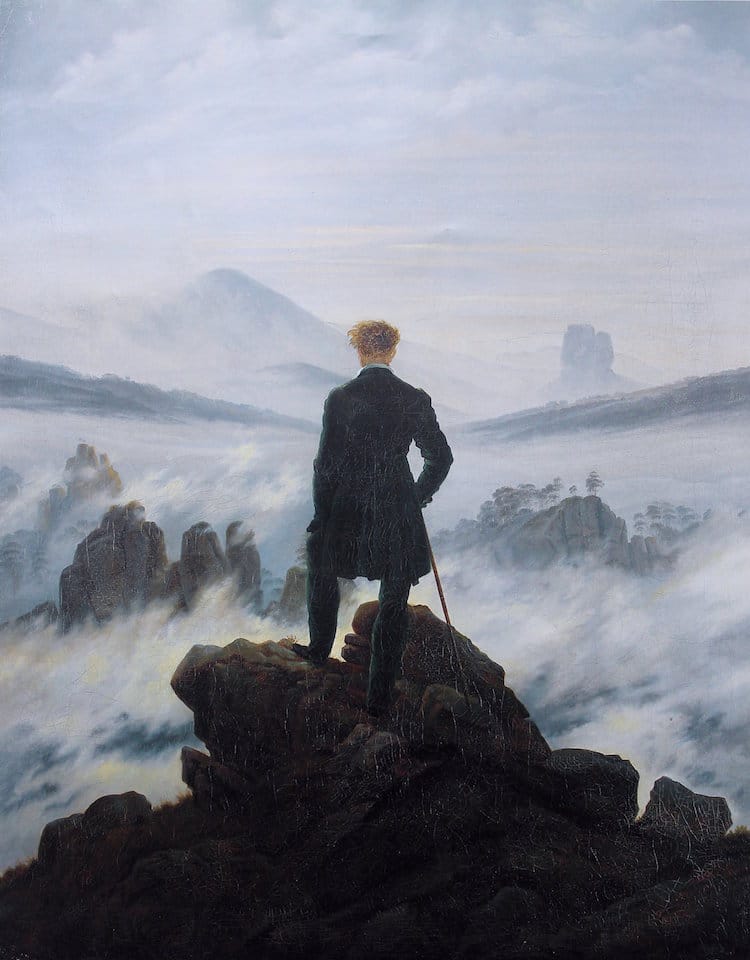
Caspar David Friedrich, “Wanderer Above the Sea of Fog,” c. 1817 (Photo: Hamburger Kunsthalle via Wikimedia Commons, Public domain)
A key work from the Romantic period, The Wanderer Above the Sea of Fog conveys the awe-inspiring and sublime characteristics of nature. Through the thick fog, jagged cliffs and rocky mountains topped with trees emerge in the distance. While a figure is featured in the center of the canvas, his back is to the viewer, redirecting his or her gaze to the backdrop.
John Constable, The Hay Wain, 1821
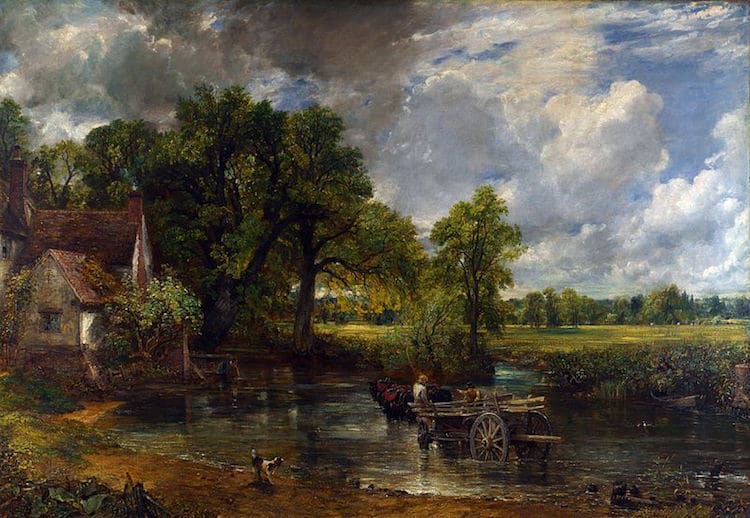
John Constable, “The Hay Wain,” 1821 (Photo: National Gallery via Wikimedia Commons, Public domain)
British artist John Constable is renowned for his paintings of the English countryside. The Hay Wain—a piece often cited as “Constable's most famous image”—conveys this favored subject matter. In the background, a cloudy sky is offset by bright green trees, while, in the foreground, horses are shown pulling a cart across a reflective river.
Katsushika Hokusai, South Wind, Clear Sky from Thirty-Six Views of Mount Fuji, 1830
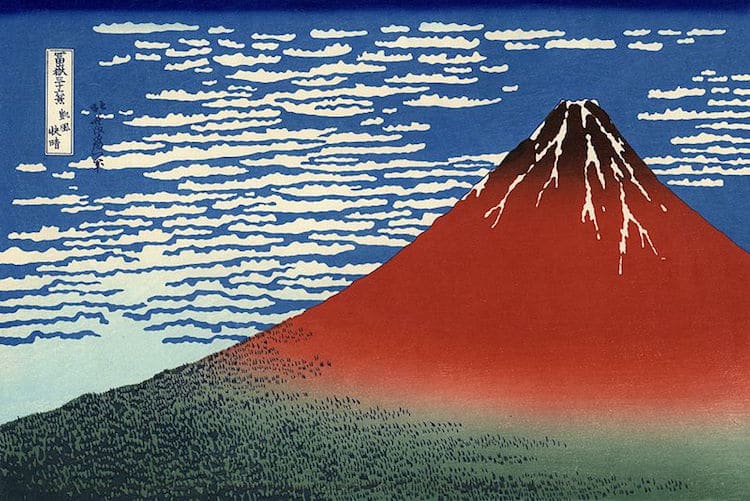
Katsushika Hokusai, “South Wind, Clear Sky from Thirty-Six Views of Mount Fuji,” 1830 (Photo: Wikimedia Commons, Public domain)
South Wind, Clear Sky is 1 in a series of 36. Like its counterparts, this woodblock print presents a unique view of Mount Fuji. In each distinct portrayal, Japanese artist Katsushika Hokusai plays with color and perspective to offer a one-of-a-kind vantage point of the mountain.
Thomas Cole, View from Mount Holyoke, Northampton, Massachusetts, after a Thunderstorm—The Oxbow, 1836
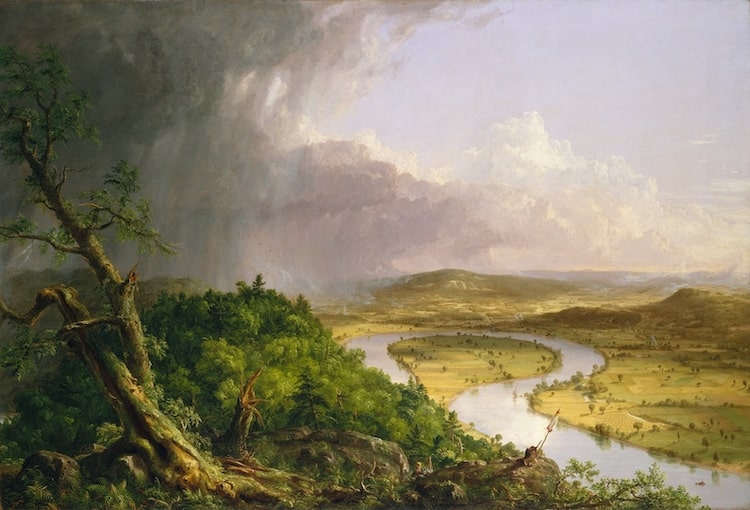
Thomas Cole, “View from Mount Holyoke, Northampton, Massachusetts, after a Thunderstorm—The Oxbow,” 1836 (Photo: The Met via Wikimedia Commons, Public domain)
Often referred to simply as The Oxbow, this piece by American artist Thomas Cole juxtaposes wild nature with an idyllic, pastoral setting. According to the Metropolitan Museum of Art, Cole experimented with this contrast in order to “emphasize the possibilities of the national landscape, pointing to the future prospect of the American nation.”
J. M. W. Turner, Rain, Steam and Speed – The Great Western Railway, 1844
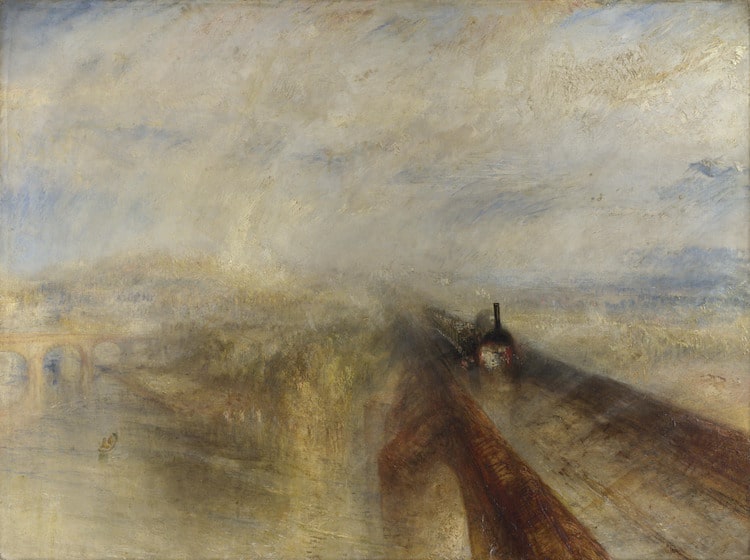
J.M.W. Turner, “Rain, Steam and Speed – The Great Western Railway,” 1844 (Photo: National Gallery via Wikimedia Commons, Public domain)
Like many works by J. M. W. Turner, Rain, Steam and Speed – The Great Western Railway acts as both a beautiful landscape and a study of light, movement, and color. While, in this particular piece, the artist's focus is on capturing the speed of a train, the backdrop offers a show-stealing, nearly abstracted view of nature.
Claude Monet, Impression, Sunrise, 1872

Claude Monet, “Impression, Sunrise,” 1872 (Photo: Musée Marmottan Monet via Wikimedia Commons, Public domain)
Painted by Claude Monet and showcased in the 1874 “Exhibition of the Impressionists,” Impression, Sunrise gave name to the Impressionist movement. The oil painting is set in Le Havre, France, and offers the artist's “impression” of the setting sun's effect on the water.
Paul Cézanne, Mont Sainte-Victoire, 1885–1887
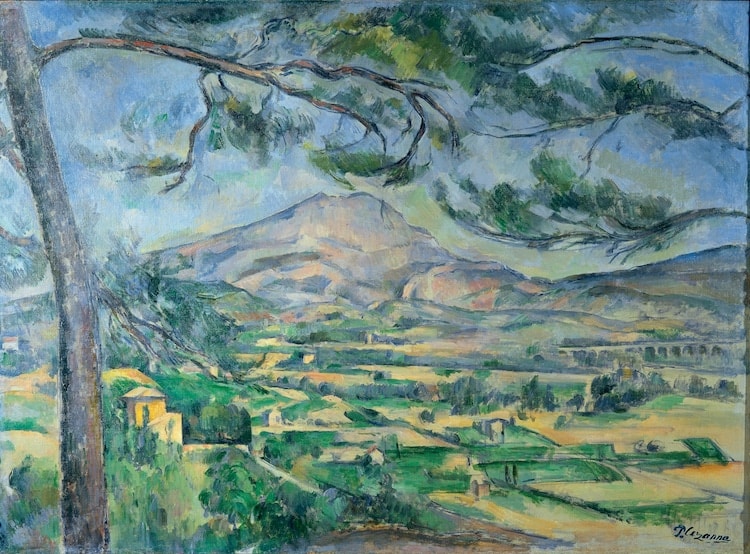
Paul Cézanne, “Mont Sainte-Victoire with Large Pine,” c. 1887 (Photo: Courtauld Institute of Art via Wikimedia Commons, Public domain)
Sainte-Victoire, a mountain in the South of France, remained Post-Impressionist painter Paul Cézanne‘s preferred subject matter for years. In his series of oil paintings portraying the landform, he experiments with different views, color palettes, and perspectives to produce a comprehensive look at the mountain and its surrounding landscape. In this depiction from 1887, he frames the scene with trees in the foreground and a village in the distance.
Vincent van Gogh, Wheat Field with Cypresses, 1889
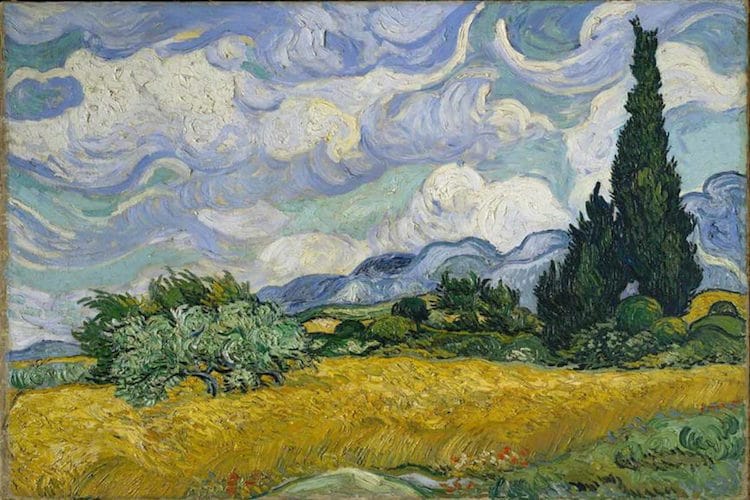
Vincent van Gogh, “Wheat Field with Cypresses,” 1889 (Photo: Wikimedia Commons, Public domain)
Wheat Field with Cypresses by Vincent van Gogh features several motifs often explored by the artists in his landscape depictions. These include towering trees, swirling clouds, and rolling hills. In a letter to his brother, Theo, van Gogh describes the painting. “I have a canvas of cypresses with some ears of wheat, some poppies, a blue sky like a piece of Scotch plaid; the former painted with a thick impasto like the Monticelli's, and the wheat field in the sun, which represents the extreme heat, very thick too.”
Want to see more famous landscape paintings? See our full list here.
Contemporary Landscape Painting
Given the long and diverse history of landscape painting, it is not surprising that many artists still dabble in the genre today. As evident in this contemporary landscape painting collection, many creatives have taken cues from the past to create landscape art that is both evidently inspired and highly original.
See if you can spot any similarities between these pieces by contemporary landscape artists and those by key figures from the past.
Erin Hanson
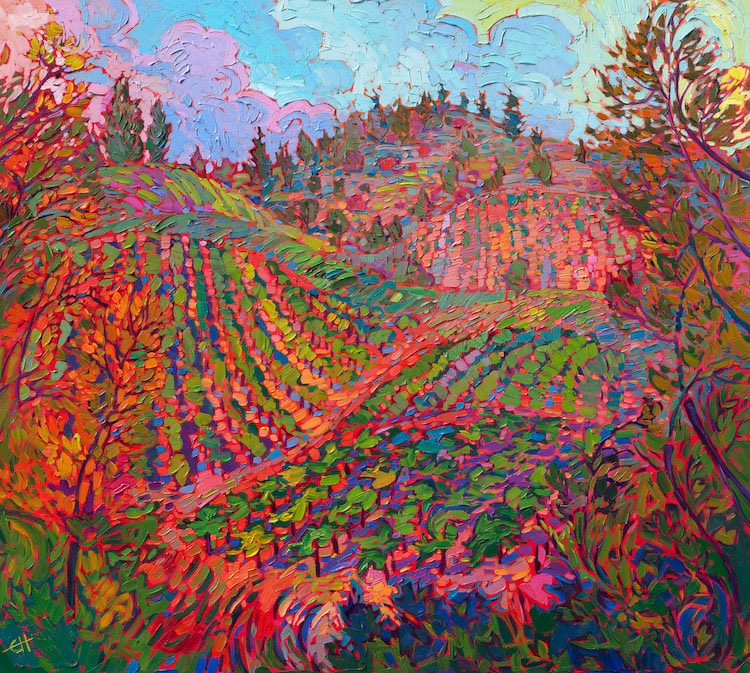
Photo: Erin Hanson
Oregon-based artist Erin Hanson has picked up the torch of the Impressionist movement in her invention of Open-Impressionism, a modern version of the style that uses impasto paint strokes without layering.
Erin Hanson: Website | Instagram | Blog | Facebook
Crystal Liu

Photo: Crystal Liu
Artist Crystal Liu intimately ties her emotional states to beautiful abstract paintings. In large-scale works, she constructs landscapes that are metaphors for the intangible forces that drive us.
Crystal Liu: Website | Instagram
David Ambarzumjan
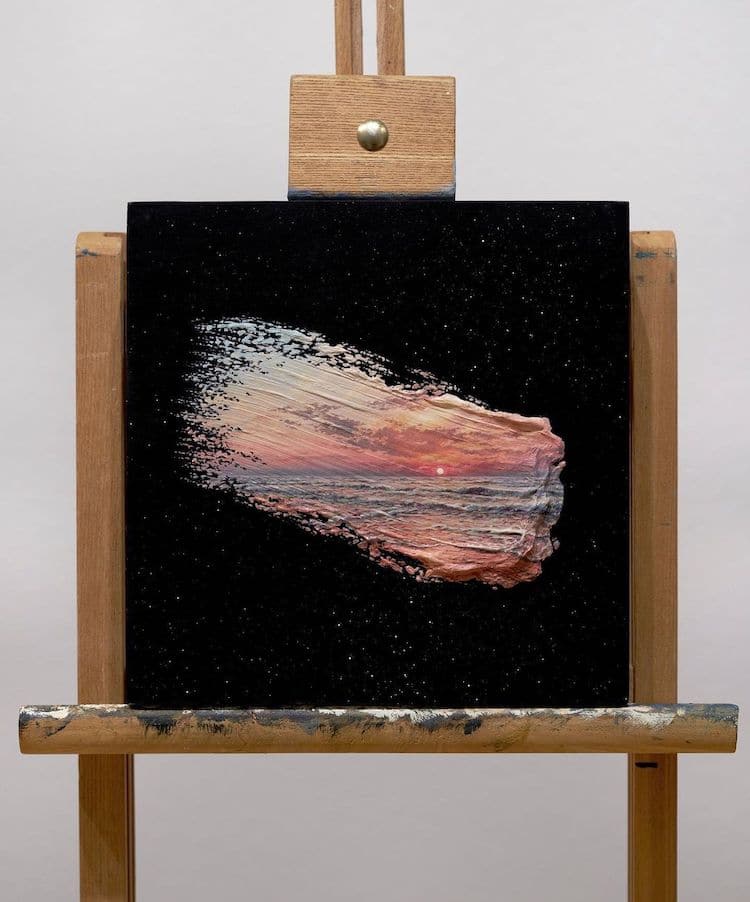
Photo: David Ambarzumjan
The art of Munich-based painter David Ambarzumjan contains two pictures on one canvas. His ongoing series called Brushstrokes in Time juxtaposes present-day scenes of life on Earth with a view of the planet from a vastly different time period.
David Ambarzumjan: Website | Instagram | Facebook
Jennifer L. Mohr
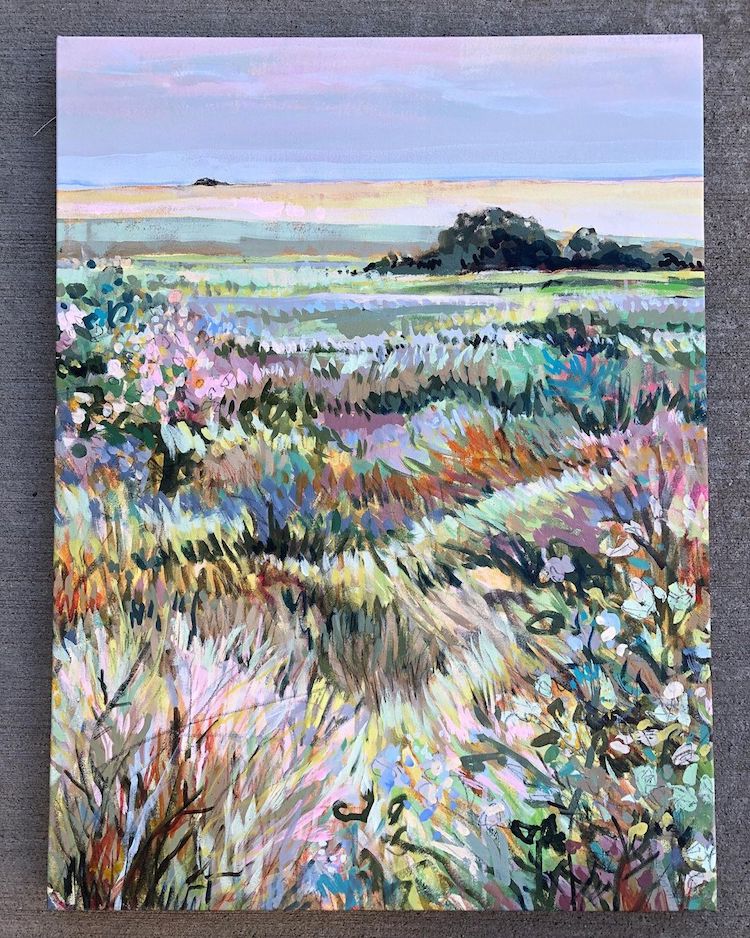
Photo: Jennifer L. Mohr
Raised and based in Alberta, Canada, mixed-media painter Jennifer L. Mohr has centered her creative practice on her connection to the native prairie landscapes where she enjoyed her childhood. The artist's ongoing series Belonging to the Land focuses on her “place-identity connection” through expressive depictions of sprawling plains and blooming wildflowers.
Jennifer L. Mohr: Website | Facebook | Instagram
Blu Smith
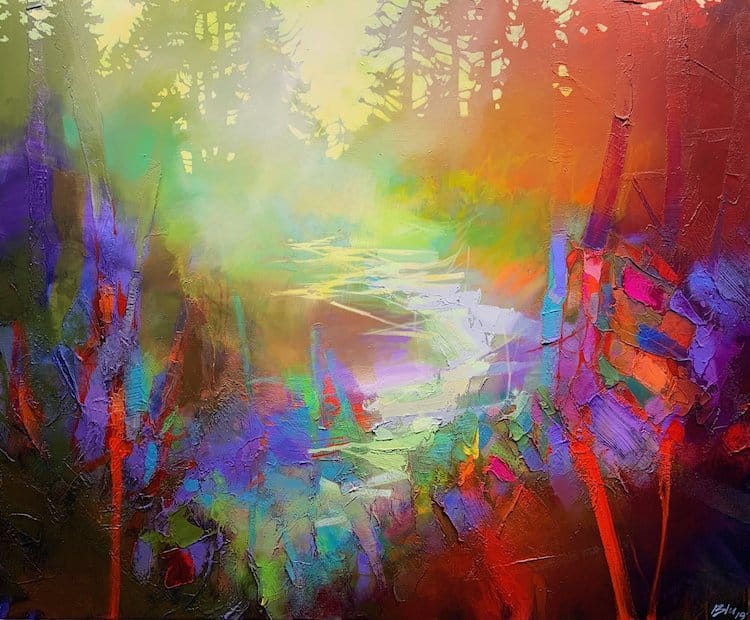
Photo: Blue Smith
Artist Blu Smith creates colorful abstract paintings that explore how light interacts with the landscapes of the Canadian West Coast.
Blu Smith Gallery: Website | Facebook | Instagram
Remington Robinson
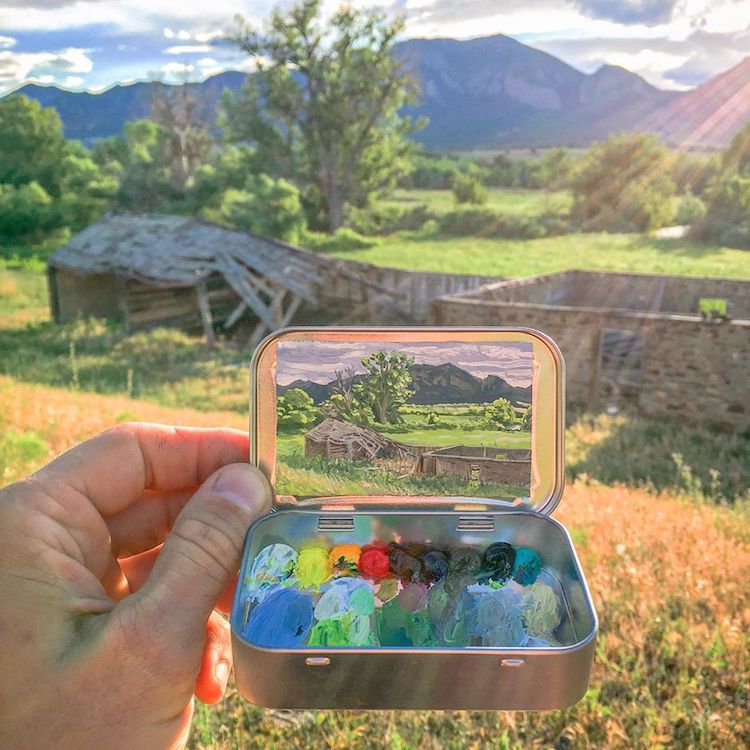
Photo: Remington Robinson
Colorado-based artist Remington Robinson creates miniature masterpieces of scenery in the U.S. and abroad and houses them inside of Altoid tins.
Remington Robinson: Website | Facebook | Instagram
Ariel Lee
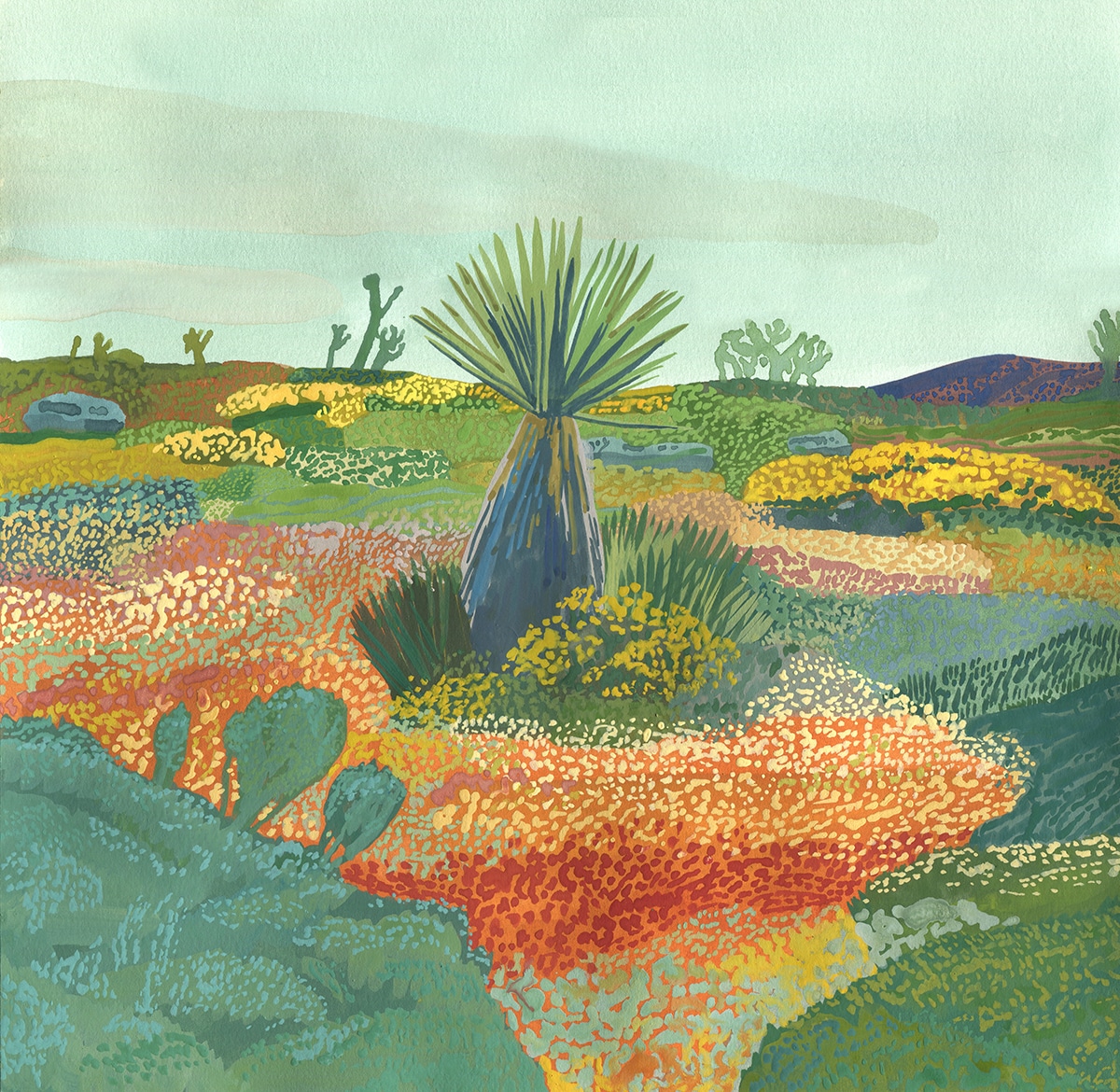
Photo: Ariel Lee
Artist Ariel Lee pays homage to the power of the outdoors through contemporary landscape painting. Her colorful works focus on grand, sweeping scenery with precise brushstrokes, presenting a love letter to both natural beauty and the therapeutic effect that it can have.
Ariel Lee: Website | Instagram
Luiza Niechoda
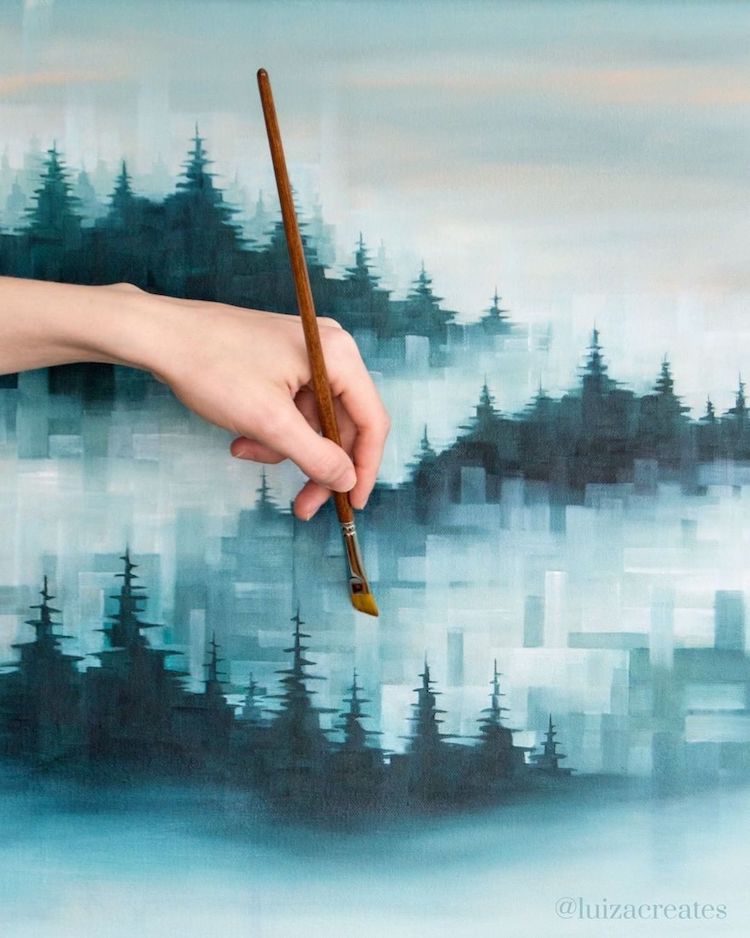
Photo: Luiza Niechoda
Polish artist Luiza Niechoda simplifies landscapes with her pixelated style. Inspired by the Pacific Northwest and Romantic artists like Friedrich and J.M.W. Turner, she creates striking renditions of verdant forests and misty mountainous backgrounds.
Luiza Niechoda: Website | Facebook | Instagram
Rachel Cassiani
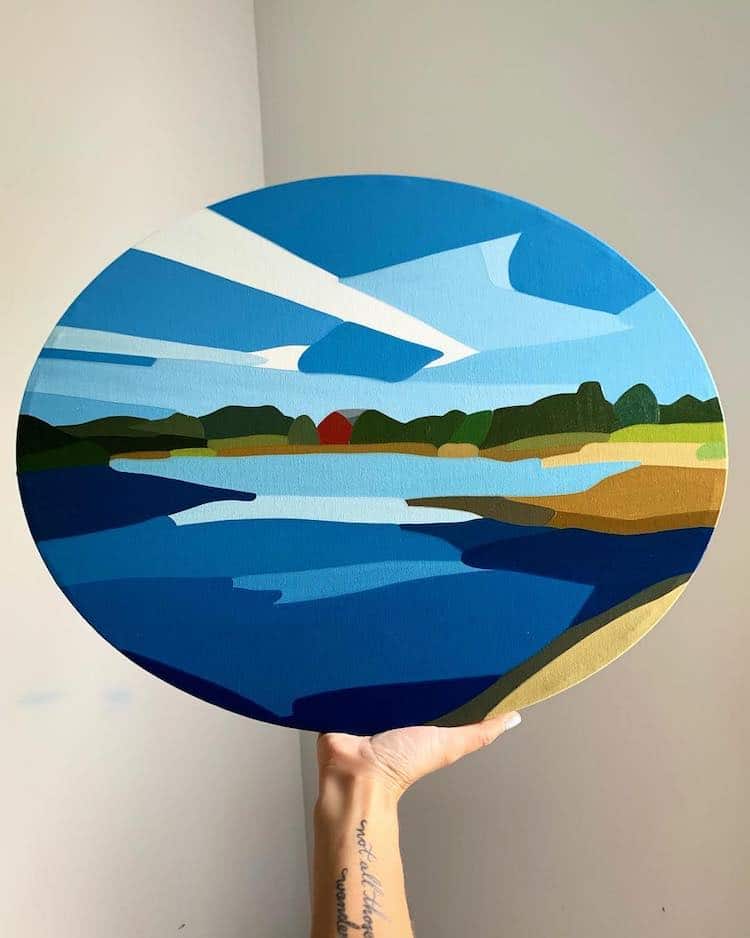
Photo: Rachel Cassiani
Massachusetts-based artist Rachael Cassiani creates abstract landscape paintings inspired by the sandy cliffs, shorelines, and blue skies of her local beaches. Each bold oil painting manages to capture the essential elements of the tranquil scenes with simplified shapes and vivid color.
Rachael Cassiani: Instagram
How to Make Your Own Landscape Paintings
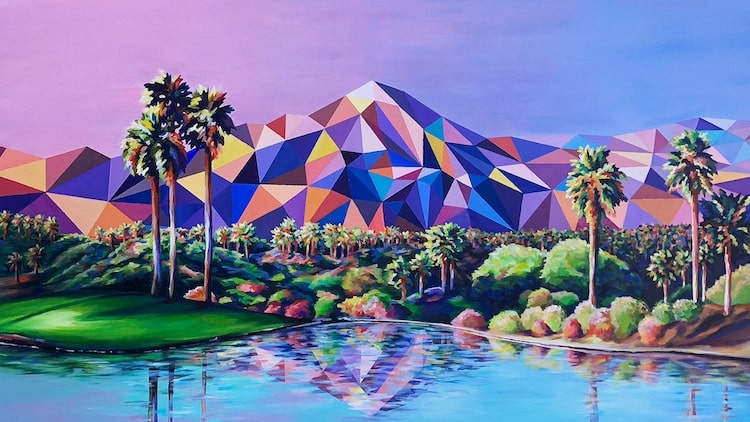
Geometric landscape from “Acrylic Landscapes: Reimagining Mountains as Polygons” (Photo: Elyse Dodge | My Modern Met Academy)
Make your mountains magical by imagining them as vibrant triangles across the canvas. Artist Elyse Dodge will show you how to create your contemporary landscape acrylic painting starting with the computer and ending on canvas.
You can take Dodge's online class Acrylic Landscapes: Reimagining Mountains as Polygons on My Modern Met Academy.
Books About Landscape Painting
Want to expand your knowledge about landscape painting? Check out some of these books. (Making a purchase via Bookshop helps support independent bookstores.)
This article has been edited and updated.
Related Articles:
Monumental Masterpieces: 10 of Art History’s Most Famous Large-Scale Paintings
Set Sail on a Journey Through 9 of Art History’s Most Important Seascape Paintings
Fall in Love with 5 of Art History’s Most Romantic Masterpieces
How Flowers Blossomed Into One of Art History’s Most Popular Subjects



































































